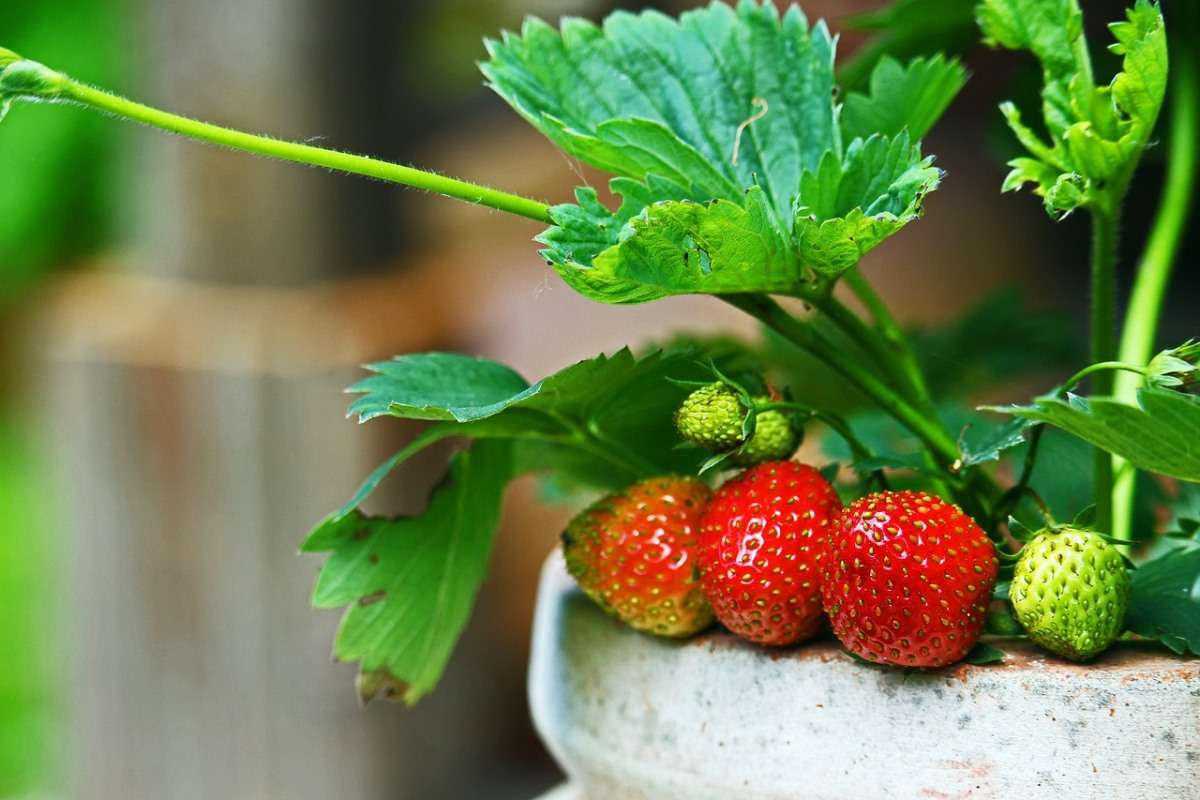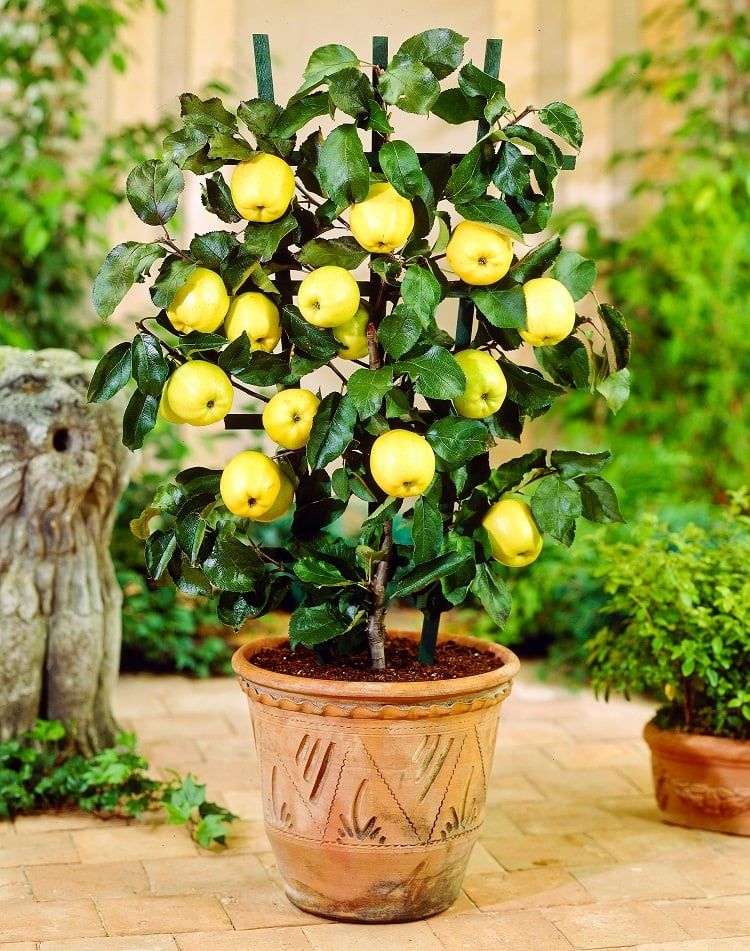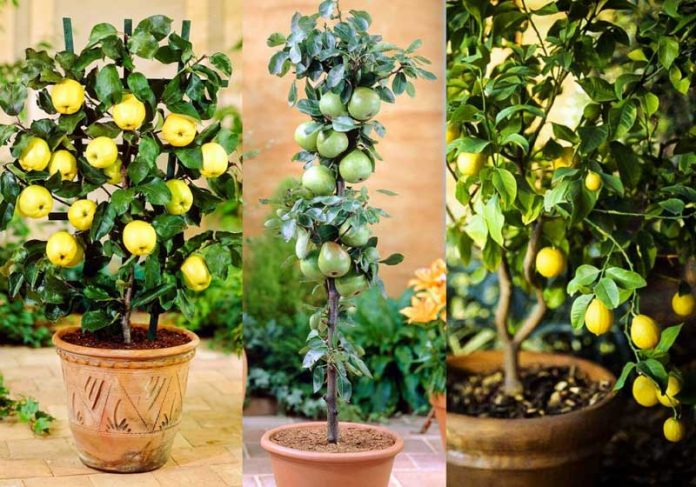Why Container Gardening is Perfect for Growing Fruit
Container gardening offers a unique set of benefits that make it an ideal way to grow fruit, even in small spaces. One of the primary advantages of container gardening is its flexibility. With containers, you can move your fruit plants to different locations to optimize their exposure to sunlight, wind, and other environmental factors. This flexibility also allows you to easily rearrange your containers to create a visually appealing display or to accommodate changing weather conditions.
Another significant benefit of container gardening is its space-saving potential. Containers can be placed on balconies, patios, or even rooftops, making it possible to grow fruit in areas where traditional gardening is not feasible. Additionally, containers can be used to create a vertical garden, maximizing space and adding a decorative element to your outdoor area.
Container gardening also provides improved soil quality, as you can select a high-quality potting mix specifically designed for fruit plants. This ensures that your plants receive the necessary nutrients for optimal growth and fruit production. Furthermore, containers allow for better drainage, reducing the risk of waterlogged soil and root rot.
For those with limited space, container gardening is an excellent option for growing a variety of fruits, including strawberries, blueberries, and citrus. These fruits are well-suited for container gardening due to their compact growth habits and relatively small root systems. By growing fruit in containers, you can enjoy a bountiful harvest even in the smallest of spaces.
Overall, container gardening offers a unique combination of flexibility, space-saving potential, and improved soil quality, making it an ideal way to grow fruit. Whether you have a small balcony or a large patio, container gardening can help you achieve a thriving harvest of delicious and nutritious fruit.
Choosing the Right Containers for Your Fruit Plants
When it comes to growing fruit in containers, selecting the right container is crucial for optimal growth and fruit production. The size of the container will depend on the type of fruit plant you are growing, as well as its mature size. For example, a strawberry plant may require a container that is at least 6-8 inches deep and 12-18 inches wide, while a blueberry bush may require a larger container that is at least 12-18 inches deep and 24-36 inches wide.
The material of the container is also an important consideration. Plastic containers are lightweight and easy to move, but may retain too much heat and dry out the soil. Clay containers, on the other hand, are more breathable and can help to regulate soil temperature, but may be heavier and more prone to cracking. Wooden containers are another option, but may require more maintenance to prevent rot and insect damage.
Drainage is also a critical factor to consider when selecting a container for growing fruit. Make sure the container has drainage holes in the bottom to prevent waterlogged soil and root rot. You can also add a layer of broken pottery or small rocks at the bottom of the container to improve drainage.
Finally, consider the mobility of the container. If you plan to move the container around to optimize sunlight or to bring it indoors during the winter, choose a container that is lightweight and easy to move. Some containers, such as those made of plastic or fiberglass, are designed with mobility in mind and may have built-in handles or wheels.
Some popular types of containers for growing fruit include:
- Plastic containers: lightweight and easy to move, but may retain too much heat
- Clay containers: breathable and can help to regulate soil temperature, but may be heavier and more prone to cracking
- Wooden containers: require more maintenance to prevent rot and insect damage, but can add a decorative element to your garden
- Fiberglass containers: durable and low-maintenance, but may be more expensive than other options
By considering these factors and choosing the right container for your fruit plants, you can create a thriving and productive container garden that will provide you with fresh, delicious fruit for years to come.
Top 5 Easy-to-Grow Fruits in Containers
When it comes to growing fruit in containers, some varieties are easier to grow than others. Here are the top 5 easy-to-grow fruits in containers, along with their growing requirements and benefits:
1. Strawberries: Strawberries are one of the easiest fruits to grow in containers. They require a container that is at least 6-8 inches deep and 12-18 inches wide, with good drainage and a well-draining potting mix. Strawberries are perfect for containers because they are compact, produce fruit quickly, and don’t require a lot of maintenance.
2. Blueberries: Blueberries are another popular fruit to grow in containers. They require a container that is at least 12-18 inches deep and 24-36 inches wide, with acidic soil and consistent moisture. Blueberries are a great choice for containers because they are relatively low-maintenance and produce delicious fruit.
3. Citrus: Citrus fruits like lemons, limes, and oranges are easy to grow in containers. They require a container that is at least 12-18 inches deep and 24-36 inches wide, with well-draining soil and full sun. Citrus fruits are perfect for containers because they are compact, produce fruit quickly, and can be grown indoors or outdoors.
4. Raspberries: Raspberries are a great choice for containers because they are easy to grow and produce delicious fruit. They require a container that is at least 12-18 inches deep and 24-36 inches wide, with well-draining soil and full sun. Raspberries are perfect for containers because they are compact, produce fruit quickly, and don’t require a lot of maintenance.
5. Blackberries: Blackberries are another popular fruit to grow in containers. They require a container that is at least 12-18 inches deep and 24-36 inches wide, with well-draining soil and full sun. Blackberries are a great choice for containers because they are relatively low-maintenance and produce delicious fruit.
These five fruits are perfect for growing in containers because they are easy to grow, produce delicious fruit, and don’t require a lot of maintenance. By following the growing requirements and tips outlined above, you can enjoy a bountiful harvest of fresh, delicious fruit from your container garden.
How to Grow Fruit in Containers: A Step-by-Step Guide
Growing fruit in containers can be a rewarding and delicious experience, but it requires proper care and maintenance. Here is a step-by-step guide on how to grow fruit in containers:
Step 1: Prepare the Container
Before planting, make sure the container is clean and free of any debris. If using a new container, rinse it with water to remove any residue. If using a previously used container, disinfect it with a solution of 1 part bleach to 10 parts water.
Step 2: Select the Right Soil
Choose a high-quality potting mix specifically designed for fruit plants. Avoid using garden soil, as it can compact and prevent proper drainage. If necessary, add organic matter such as compost or well-rotted manure to improve soil fertility and structure.
Step 3: Plant the Fruit Tree or Bush
Plant the fruit tree or bush in the container, making sure the root ball is level with the soil surface. Water thoroughly to settle the soil. If necessary, add a layer of mulch to retain moisture and suppress weeds.
Step 4: Water and Fertilize
Water the fruit plant regularly, making sure the soil is consistently moist but not waterlogged. Fertilize with a balanced fertilizer (10-10-10) during the growing season (spring-fall). Avoid over-fertilizing, as this can damage the plant.
Step 5: Provide Support and Pruning
Provide support for the fruit plant, such as a trellis or stake, to keep it upright and promote healthy growth. Prune the plant regularly to maintain shape, promote fruiting, and remove any dead or diseased branches.
Step 6: Monitor for Pests and Diseases
Regularly inspect the fruit plant for signs of pests or diseases, such as aphids, whiteflies, or powdery mildew. Take action promptly to prevent infestations or infections, using organic or integrated pest management (IPM) methods whenever possible.
By following these steps and providing proper care and maintenance, you can enjoy a bountiful harvest of delicious and nutritious fruit from your container garden.
Common Challenges and Solutions for Container Fruit Gardening
While container fruit gardening can be a rewarding and delicious experience, it’s not without its challenges. Here are some common challenges faced by container fruit gardeners, along with solutions and tips on how to overcome them:
Pests: Pests such as aphids, whiteflies, and spider mites can be a problem for container fruit gardeners. Solution: Use neem oil or insecticidal soap to control pest populations. Also, make sure to inspect your plants regularly and remove any infested or damaged leaves.
Diseases: Fungal diseases such as powdery mildew and root rot can be a problem for container fruit gardeners. Solution: Use a fungicide specifically designed for fruit plants, and make sure to remove any infected or damaged leaves. Also, improve air circulation around your plants by providing enough space between containers.
Nutrient Deficiencies: Container fruit plants can be prone to nutrient deficiencies, especially if the soil is not well-draining or if the plants are not receiving enough fertilizer. Solution: Use a balanced fertilizer (10-10-10) and follow the instructions on the label. Also, make sure to repot your plants every 1-2 years to refresh the soil.
Watering Issues: Overwatering or underwatering can be a problem for container fruit gardeners. Solution: Check the soil moisture regularly by sticking your finger into the soil up to the first knuckle. If the soil feels dry, it’s time to water. Also, make sure to water your plants in the morning so the plants have the entire day to absorb the water.
Temperature Extremes: Container fruit plants can be sensitive to temperature extremes, especially if they are exposed to direct sunlight or frost. Solution: Provide shade for your plants during the hottest part of the day, and bring them indoors or provide protection during frosty weather.
By being aware of these common challenges and taking steps to prevent or solve them, you can enjoy a healthy and productive container fruit garden.
Maximizing Space: Tips for Growing Multiple Fruits in One Container
One of the most significant advantages of container gardening is the ability to grow multiple fruits in a single container. This technique, known as companion planting, allows you to maximize space and create a diverse and thriving fruit garden. Here are some tips for growing multiple fruits in one container:
Companion Planting: Companion planting involves growing multiple fruits together in the same container. This technique can help to improve soil health, reduce pests and diseases, and increase fruit production. For example, planting strawberries and blueberries together can help to improve soil fertility and reduce the risk of pests and diseases.
Vertical Gardening: Vertical gardening involves growing fruits up a trellis or other support system. This technique can help to maximize space and create a stunning display of fruiting plants. For example, growing raspberries or blackberries up a trellis can help to create a beautiful and productive fruit garden.
Using Trellises or Arbors: Trellises or arbors can be used to support multiple fruits in a single container. This technique can help to maximize space and create a stunning display of fruiting plants. For example, growing citrus or grapes up a trellis can help to create a beautiful and productive fruit garden.
Choosing the Right Combinations: When growing multiple fruits in one container, it’s essential to choose the right combinations. For example, planting fruits that have similar growing requirements, such as strawberries and blueberries, can help to ensure a healthy and productive fruit garden.
Some popular combinations for growing multiple fruits in one container include:
- Strawberries and blueberries: These two fruits have similar growing requirements and can help to improve soil fertility and reduce the risk of pests and diseases.
- Citrus and grapes: These two fruits can be grown up a trellis or arbor and can help to create a stunning display of fruiting plants.
- Raspberries and blackberries: These two fruits can be grown up a trellis or arbor and can help to create a beautiful and productive fruit garden.
By using these techniques and choosing the right combinations, you can create a thriving and productive fruit garden in even the smallest of spaces.
Harvesting and Enjoying Your Container-Grown Fruit
After months of careful nurturing, your container-grown fruit is finally ready to be harvested. Here are some tips on how to properly harvest and enjoy your fresh fruit:
Ripeness: Check your fruit regularly for ripeness. Different fruits have different ripening times, so make sure to research the specific ripening time for your fruit. For example, strawberries are typically ready to be harvested in as little as 60 days, while citrus fruits may take up to 6 months to ripen.
Harvesting: Use scissors or a sharp knife to harvest your fruit. Make sure to leave a small piece of stem attached to the fruit to prevent it from spoiling. For fruits like strawberries and raspberries, you can simply snip off the fruit at the base of the stem.
Storage: Store your harvested fruit in a cool, dry place to keep it fresh for as long as possible. For fruits like citrus and apples, you can store them in the refrigerator to keep them fresh for several weeks. For fruits like strawberries and raspberries, it’s best to use them immediately or store them in the refrigerator for up to a week.
Using Your Fresh Fruit in Recipes: One of the best things about growing your own fruit is being able to use it in a variety of delicious recipes. Here are a few ideas to get you started:
- Strawberry shortcake: Slice up your fresh strawberries and layer them with whipped cream and sweet biscuits for a classic dessert.
- Citrus salad: Combine your freshly harvested citrus fruits with mixed greens, nuts, and a tangy vinaigrette for a refreshing and healthy salad.
- Raspberry sorbet: Puree your fresh raspberries with a little sugar and lemon juice, then freeze for a light and delicious dessert.
By following these tips, you can enjoy your container-grown fruit at its best and make the most of your harvest.
Conclusion: Enjoying the Fruits of Your Labor
Growing fruit in containers can be a rewarding and delicious experience, providing you with fresh, healthy produce right in your own backyard or even on your balcony or patio. With the right containers, soil, and care, you can enjoy a bountiful harvest of your favorite fruits, from strawberries and blueberries to citrus and raspberries.
Container gardening offers many benefits, including flexibility, space-saving, and improved soil quality. It’s a great option for small gardens, balconies, or patios, and can be adapted to suit a variety of climates and growing conditions.
By following the tips and techniques outlined in this article, you can create a thriving and productive container fruit garden that will provide you with fresh, delicious fruit for months to come. Whether you’re a seasoned gardener or just starting out, container gardening is a great way to enjoy the many benefits of growing your own fruit.
So why not give it a try? Start planning your container fruit garden today, and get ready to enjoy the fruits of your labor!







